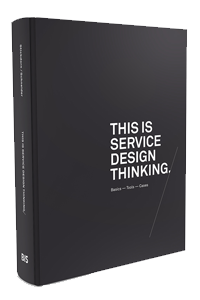In tomorrow’s podcast with Marc Stickdorn, co-author of This is Service Design Thinking, I asked my typical “last question” and it went like this:
Joe: Is there something that I didn’t ask that you would like to expand on or mention about service design thinking?
Marc: Maybe I would like to add one thing and that’s about expectations. We talked a lot about experiences now and one really; really important thing is the expectations. If you’re thinking about what advertisements do and communications if you go online and read reviews about said product and so forth it’s all affecting expectations. That is something really, really important.
If you’re thinking what satisfaction is, customer satisfaction, it really depends on the expectation. You level your expectations against your experiences. That’s what still many companies don’t really get to level their expectation that right manner. Expectation management is one thing which needs to be included in service design.
Joe: The expectation of what a customer should know and what an organization should do. Having that commonality really is what makes the product experience great. I think that’s a great point.
Marc: Definitely. That’s why low-cost carriers are working so good because they promise you nothing and at the end of the day you get from A to B and that’s all you want and that’s all they promise and that’s all they do. That’s why they work. They can have an awful customer experience but if they don’t promise anything else, fair enough.
If you promise to have an awesome customer experience and you just provide an average experience that’s something negative. That’s what I meant with a shift from advertising to experiences as well.
How many of us spend time on expectations? How many of us over promise and under deliver? We spend time on defining customer needs and how we can deliver on them but do we ever define his expectations? Most sales teachings employ techniques that are manipulative and tied to customer emotions. You try to guide them down a certain path. I have written about this before in Kill the Sales and Marketing Funnel where I said:
The Sales and Marketing Funnel is a theory that needs to be laid to rest. A linear approach to predict, plan, and proceed is a precarious way to advance. This approach prematurely foresees a solution for the customer without ever understanding their problem. And if you consider addressing the application of social media, it does nothing to support inbound marketing. As we work our way down the funnel, it is just as likely evidence will mount that the proposed solution is wrong. However, we have so much invested we attempt to sway the course of action in our favor. Linear planning will increase the risk for a customer to engage in an inappropriate course of action.
I find expectations are closely rooted to empathy. You have to take interest in the customer’s well-being in able to assist them in defining the minimum level of performance needed and the amount of effort they are willing to put forth. The key is listening with empathy. Your persona is more important than the customers at this point. Before you begin teaching the customer what they need to know, start thinking of this process a little differently. Think of it as you being the pupil rather than the teacher. Think about you having that “aha” moment or that moment when you “get it” versus when your customer gets it. When that “Aha” moment arrives – delighting the customer may not be all that difficult.
P.S. Review the The Lean Engagement Team
Related Information:
The Subservient Marketing Funnel
Servant Leadership in the Toyota Culture
Can anyone truly understand and empathize with another?
Four Star General on Leadership–Listen, Learn…
